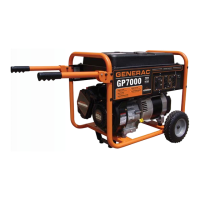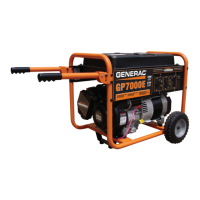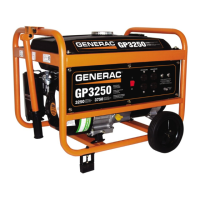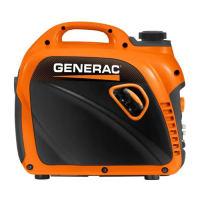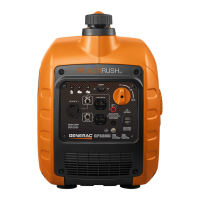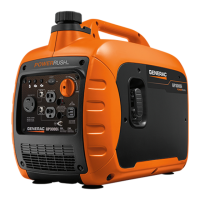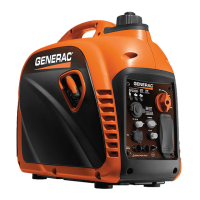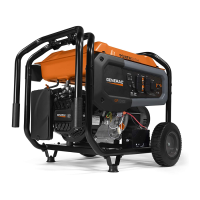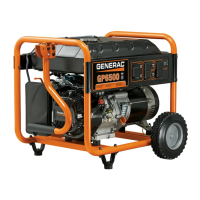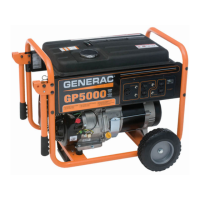Using a generator indoors CAN KiLL YOU iN MINUTES.
GroundingtheGeneratorinaBuildingStandbyApplicati0n
Generator exhaust contains carbon monoxide. This is
a poison you cannot see or smell.
NEVER use inside a home
or garage, EVENiF doors
and windows are open.
Only use OUTSIDE and
far away from windows,
doors, and vents.
2.4.1 GROUNO/NGTHEGENERATORWHENUSEDASA
PORTABLE
This generator has an equipment ground that connects the
generatorframe componentsto the ground terminals on the AC
output receptacles (see NEC 250.34 (A) for explanation). This
allows the generatorto be used as a portable without grounding
the frame of the generatorasspecifiedin NEC250.34.
SpecialRequirements
There may be Federalor State OccupationalSafety and Health
Administration(OSHA)regulations,localcodes,or ordinancesthat
applyto the intendeduse of the generator.
Pleaseconsult a qualified electrician,electrical inspector, or the
local agencyhavingjurisdiction:
* In some areas, generators are requiredto be registeredwith
local utilitycompanies.
* If the generatoris used at a construction site, there may be
additionalregulationswhich must be observed.
2.4.2 CONNECT/NGTHEGENERATORTOA BU/LD/NG'$
ELECTRICALSYSTEM
Connectionsfor standby power to a building's electrical system
must be made by a qualified electrician and in strict compliance
with all national and local electrical codes and laws. The
connectionmust isolatethegeneratorpowerfrom utility poweror
otheralternativepowersources.
NOTE:
Becausethe generator equipmentground is bondedto the AC
neutralwiresin thegenerator,eithera 3-poletransferswitchor
a 2 poletransferswitchwith a switchingneutralkit is required
to connectthisgenerator to a buildingload.In this application
the generator becomesa separatelyderived system(see NEC
250.20 (D)), and must be grounded in accordance with the
nationalor localelectricalcoderequirements.
,_The National Electrical Code requires that the
frame and external electrically conductive parts
of this generator be properly connected to an
approved earth ground,
Local electrical codes may also require proper grounding of
the unit (Figure8). Forthat purpose, connecting a No. 10 AWG
(AmericanWireGauge)strandedcopperwireto the groundinglug
and to an earth-drivencopperor brass grounding rod (electrode)
provides adequateprotection against electrical shock. However,
local codes may vary widely.Consultwith a localelectricianfor
grounding requirementsin the area.
Proper groundingof the generatorwill help preventelectrical
shockin the eventof a groundfault conditioninthe generatoror in
connectedelectricaldevices.Propergroundingalsohelpsdissipate
static electricity,which often buildsup in ungroundeddevices.
Figure8 - Groundingthe Generater
GROUNDING
2.5 DON'TOVERLOADTHEGENERATOR
Overloadinga generatorin excess of its rated wattage capacity
can result in damageto the generatorandto connectedelectrical
devices.Observethefollowing to preventoverloadingthe unit:
* Addupthetotal wattageofall electricaldevicesto be connected
at one time. This total should NOT be greater than the
generator'swattage capacity.
* The ratedwattageof lights can betaken from light bulbs. The
ratedwattageof tools, appliancesand motors can usually be
foundon a datalabelor decalaffixedto the device.
* If the appliance,tool or motor does not give wattage,multiply
voltstimes ampereratingto determinewatts (voltsx amps =
watts).
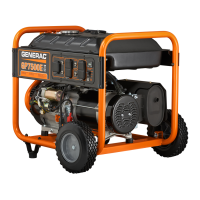
